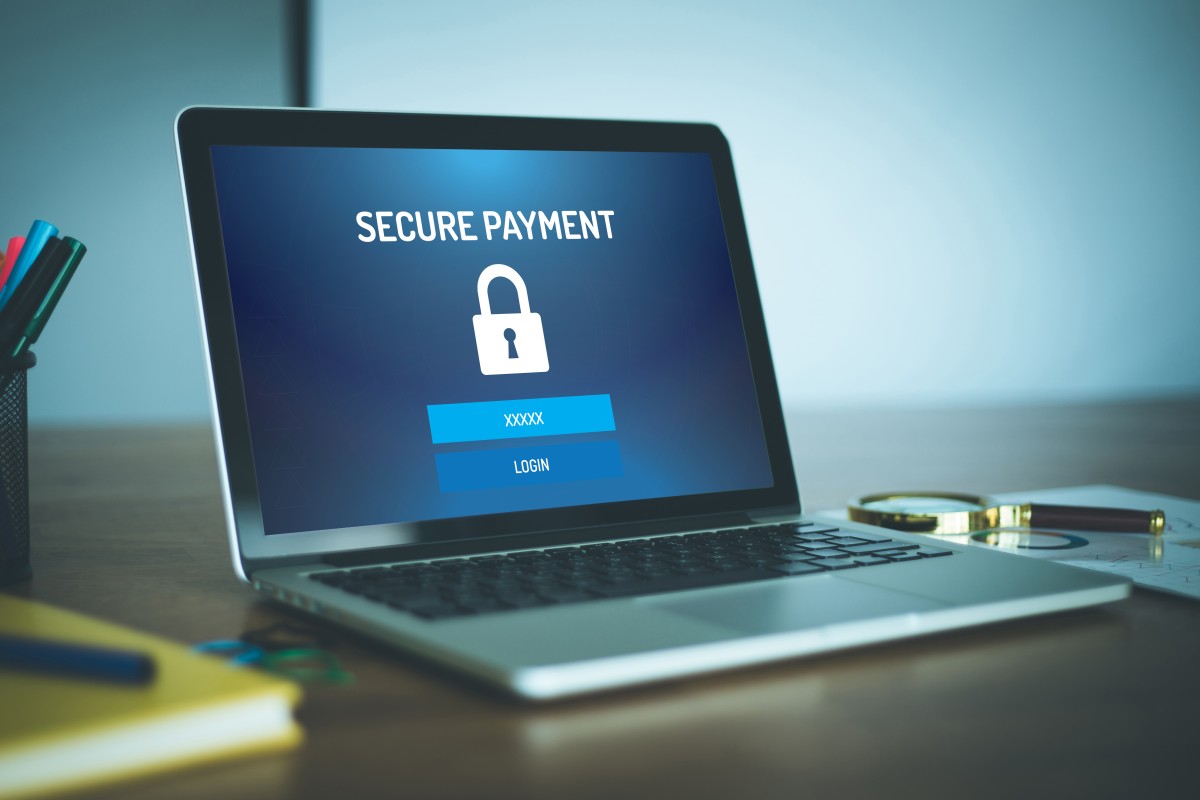💳 Tired of fumbling with cash or credit cards? Apple Pay is revolutionizing the way we make transactions, offering a seamless and secure payment method at our fingertips. But for businesses and developers, implementing this cutting-edge technology can seem like a daunting task.
Have you ever wondered how to integrate Apple Pay into your app or business? Whether you’re a startup founder looking to streamline payments or a developer aiming to enhance user experience, mastering Apple Pay implementation is crucial in today’s digital economy. From understanding the basics to optimizing performance across multiple channels, there’s a lot to consider.
In this comprehensive guide, we’ll walk you through the entire process of designing and implementing Apple Pay. We’ll cover everything from setting up Apple Pay for your business to handling transactions securely and expanding its use across various platforms. Get ready to unlock the full potential of this powerful payment solution and take your business to the next level! 🚀
Understanding Apple Pay Basics
A. What is Apple Pay and how it works
Apple Pay is a digital wallet and mobile payment service developed by Apple Inc. It allows users to make secure, contactless payments using their Apple devices. Here’s a breakdown of how it works:
- Device setup: Users add their credit or debit card information to the Wallet app on their Apple device.
- Tokenization: Card details are encrypted and replaced with a unique token for added security.
- Payment initiation: Users authenticate payments using Face ID, Touch ID, or passcode.
- Transaction processing: The payment is securely transmitted to the merchant and processed through the payment network.
B. Benefits for businesses and customers
Apple Pay offers numerous advantages for both businesses and customers:
| Benefits for Businesses | Benefits for Customers |
|---|---|
| Increased sales conversion | Convenient and fast checkout |
| Enhanced security | Improved privacy and security |
| Reduced fraud risk | No need to carry physical cards |
| Simplified checkout process | Works across multiple devices |
| Access to tech-savvy customers | Loyalty card integration |
C. Supported devices and platforms
Apple Pay is available on a wide range of Apple devices and platforms:
- iPhones (iPhone 6 and later)
- iPads (iPad Pro, iPad Air 2, and iPad mini 3 and later)
- Apple Watch (all models)
- Macs with Touch ID
- Macs (2012 or later) paired with an Apple Pay-enabled iPhone or Apple Watch
Apple Pay also works seamlessly across various platforms:
- In-store: Using NFC technology for contactless payments
- In-app: For iOS and watchOS app purchases
- On the web: Via Safari browser on supported devices
With this understanding of Apple Pay basics, let’s explore how to set up Apple Pay for your business and integrate it into your payment ecosystem.
Setting Up Apple Pay for Your Business
A. Eligibility requirements
Before diving into the Apple Pay setup process, it’s crucial to understand the eligibility requirements. To implement Apple Pay, businesses must meet the following criteria:
- Have a valid merchant account
- Be registered in a supported country or region
- Use a compatible payment processor
- Comply with Apple’s terms and conditions
Here’s a breakdown of the eligibility requirements:
| Requirement | Description |
|---|---|
| Merchant Account | A valid account with a supported payment processor |
| Supported Regions | Available in 70+ countries and regions |
| Payment Processor | Must work with Apple Pay-compatible processors |
| Compliance | Adhere to Apple’s guidelines and policies |
B. Registering with Apple
Once you’ve confirmed your eligibility, the next step is to register with Apple. This process involves:
- Creating an Apple Developer account
- Enrolling in the Apple Pay program
- Providing necessary business information
- Agreeing to Apple Pay terms and conditions
C. Obtaining necessary certificates
To ensure secure communication between your systems and Apple Pay, you’ll need to obtain and configure the following certificates:
- Apple Pay Payment Processing Certificate
- Apple Pay Merchant Identity Certificate
These certificates are crucial for encrypting sensitive payment information and verifying your merchant identity.
D. Configuring merchant accounts
The final step in setting up Apple Pay for your business is configuring your merchant accounts. This involves:
- Linking your payment processor account
- Setting up your merchant ID
- Configuring your payment gateway
- Testing your integration
With these steps completed, you’ll be ready to move on to designing the Apple Pay user interface for your app or website. This process ensures a secure and seamless integration of Apple Pay into your business operations.
Designing the Apple Pay User Interface
Apple’s design guidelines
When designing the Apple Pay user interface, it’s crucial to adhere to Apple’s design guidelines. These guidelines ensure a consistent and familiar experience for users across different apps and platforms. Apple provides detailed documentation on how to implement Apple Pay buttons, color schemes, and placement within your app.
| Guideline | Description |
|---|---|
| Button Style | Use standard Apple Pay button styles |
| Placement | Position buttons prominently in checkout flow |
| Color Scheme | Follow Apple’s recommended color palette |
| Typography | Use San Francisco font for consistency |
Creating a seamless checkout experience
A seamless checkout experience is key to increasing conversion rates and user satisfaction. To achieve this:
- Minimize the number of steps required to complete a purchase
- Pre-fill information when possible
- Provide clear error messages and recovery options
- Offer guest checkout with Apple Pay
Implementing Apple Pay buttons
Apple Pay buttons should be easily recognizable and accessible. Consider the following:
- Use official Apple Pay button assets
- Implement different button types (buy, checkout, donate)
- Ensure buttons are responsive and tap-friendly
- Test button visibility on various backgrounds
Handling different device sizes and orientations
To accommodate various devices and orientations:
- Use Auto Layout for flexible UI design
- Implement size classes for adaptive interfaces
- Test on multiple device sizes and orientations
- Ensure readability and tap targets remain accessible
Now that we’ve covered the design aspects of Apple Pay, let’s move on to the technical implementation in your app.
Implementing Apple Pay in Your App
Choosing the right SDK
When implementing Apple Pay in your app, selecting the appropriate Software Development Kit (SDK) is crucial. The primary SDK for Apple Pay integration is Apple’s native PassKit framework. However, there are also third-party SDKs available that can simplify the integration process.
| SDK | Pros | Cons |
|---|---|---|
| PassKit | Native support, direct from Apple | Steeper learning curve |
| Stripe | Easy integration, extensive documentation | Additional dependency |
| Braintree | Supports multiple payment methods | May have extra features you don’t need |
Consider your app’s specific requirements and your team’s expertise when choosing an SDK. If you’re developing solely for iOS and have experience with Apple’s frameworks, PassKit might be the best choice. For cross-platform development or if you need additional payment features, a third-party SDK could be more suitable.
Setting up the development environment
To set up your development environment for Apple Pay integration:
- Ensure you have the latest version of Xcode installed
- Join the Apple Developer Program
- Configure your Apple Pay merchant ID in your developer account
- Set up a sandbox testing environment for transactions
Integrating Apple Pay API
Integrating the Apple Pay API involves several key steps:
- Import the PassKit framework
- Set up the PKPaymentButton for user interaction
- Implement the PKPaymentAuthorizationViewControllerDelegate protocol
- Create and present the PKPaymentAuthorizationViewController
Here’s a basic example of how to create an Apple Pay button:
let payButton = PKPaymentButton(paymentButtonType: .buy, paymentButtonStyle: .black)
payButton.addTarget(self, action: #selector(payButtonTapped), for: .touchUpInside)
view.addSubview(payButton)
Testing and debugging
Thorough testing is essential to ensure a smooth Apple Pay experience. Use Apple’s sandbox environment to test various scenarios without processing real transactions. Debug common issues like incorrect merchant IDs or missing entitlements using Xcode’s debugging tools.
Now that we’ve covered the implementation process, let’s move on to handling transactions and security measures for Apple Pay.
Handling Transactions and Security
A. Processing payments securely
When handling Apple Pay transactions, security is paramount. To process payments securely:
- Use tokenization: Apple Pay uses a Device Account Number instead of the actual card number, enhancing security.
- Implement end-to-end encryption: Ensure all data transmitted is encrypted using industry-standard protocols.
- Utilize Apple’s secure element: This dedicated chip stores sensitive payment information securely on the device.
| Security Measure | Description |
|---|---|
| Tokenization | Replaces card data with unique identifier |
| Encryption | Protects data during transmission |
| Secure Element | Stores payment info in isolated chip |
B. Implementing fraud prevention measures
To minimize fraud risks:
- Use Address Verification Service (AVS) to confirm billing address matches card details
- Implement Card Verification Value (CVV) checks
- Set up velocity checks to detect unusual transaction patterns
- Utilize machine learning algorithms to identify potential fraudulent activities
C. Managing refunds and disputes
Efficient refund and dispute management is crucial:
- Establish clear refund policies
- Implement a user-friendly refund request system
- Train customer support team to handle disputes effectively
- Use chargeback prevention tools to reduce dispute occurrences
D. Ensuring compliance with data protection regulations
Compliance with data protection regulations is essential:
- Adhere to PCI DSS standards for handling card data
- Implement GDPR-compliant data handling practices for EU customers
- Regularly audit your systems to ensure ongoing compliance
- Provide clear privacy policies and obtain necessary user consents
Now that we’ve covered secure transaction handling and compliance, let’s explore how to optimize Apple Pay performance for a seamless user experience.
Optimizing Apple Pay Performance
Reducing transaction time
To optimize Apple Pay performance, reducing transaction time is crucial. Here are key strategies to achieve faster transactions:
-
Streamline the checkout process:
- Minimize required input fields
- Pre-fill customer information when possible
- Use auto-completion for addresses
-
Optimize network requests:
- Implement caching mechanisms
- Use efficient API calls
- Prioritize critical data loading
-
Implement server-side improvements:
- Utilize content delivery networks (CDNs)
- Optimize database queries
- Enable server-side caching
| Technique | Impact on Transaction Time |
|---|---|
| Streamlined checkout | Up to 30% reduction |
| Optimized network requests | 20-40% faster loading |
| Server-side improvements | 15-25% overall speedup |
Improving success rates
Enhancing success rates is vital for a smooth Apple Pay experience. Consider these approaches:
-
Implement robust error handling:
- Provide clear error messages
- Offer guided recovery steps
- Retry failed transactions automatically
-
Validate payment information early:
- Check card validity before processing
- Verify shipping address accuracy
- Confirm sufficient funds availability
-
Optimize for different device types:
- Ensure compatibility across iOS versions
- Test on various iPhone and iPad models
- Adapt UI for different screen sizes
Analyzing payment data for insights
Leverage payment data analysis to continually improve Apple Pay performance:
-
Track key metrics:
- Transaction success rate
- Average processing time
- Conversion rate from browse to purchase
-
Identify patterns and trends:
- Popular payment times and days
- Common error types and frequencies
- Customer segments with highest adoption
-
Use insights for targeted improvements:
- Optimize for peak usage periods
- Address recurring issues proactively
- Tailor the experience for power users
By implementing these optimization strategies, businesses can significantly enhance their Apple Pay performance, leading to improved user satisfaction and increased adoption rates.
Expanding Apple Pay Across Channels
Implementing Apple Pay on websites
Expanding Apple Pay to your website enhances the customer experience and streamlines the checkout process. To implement Apple Pay on your website, follow these steps:
- Set up an Apple Developer account
- Configure your website for Apple Pay
- Add the Apple Pay button to your checkout page
- Handle the payment authorization
- Process the transaction
Here’s a comparison of traditional checkout vs. Apple Pay checkout:
| Feature | Traditional Checkout | Apple Pay Checkout |
|---|---|---|
| Speed | Slower, multiple steps | Fast, one-tap payment |
| Security | Varies | Enhanced with tokenization |
| User Experience | More friction | Seamless and intuitive |
| Data Entry | Manual | Automatic |
Integrating with point-of-sale systems
Incorporating Apple Pay into your physical store’s point-of-sale (POS) system can significantly improve transaction speed and security. Here are key considerations:
- Ensure your POS hardware is NFC-enabled
- Update your POS software to support Apple Pay
- Train staff on accepting Apple Pay payments
- Display Apple Pay acceptance signage
Leveraging Apple Pay for in-app purchases
Implementing Apple Pay for in-app purchases can boost conversion rates and simplify the buying process. To integrate Apple Pay in your app:
- Configure your Xcode project for Apple Pay
- Design an intuitive UI for Apple Pay transactions
- Implement the Apple Pay API
- Test thoroughly across different iOS devices
By expanding Apple Pay across these channels, you create a cohesive payment ecosystem that enhances user experience and drives business growth. Next, we’ll explore best practices for maintaining and updating your Apple Pay implementation to ensure long-term success.
Implementing Apple Pay in your business and applications offers a seamless and secure payment experience for your customers. By following the steps outlined in this guide, from understanding the basics to expanding across channels, you can successfully integrate this powerful payment solution. Remember to prioritize user interface design, security measures, and performance optimization to ensure a smooth and reliable Apple Pay experience.
As you embark on your Apple Pay implementation journey, stay up-to-date with Apple’s latest guidelines and best practices. Continuously monitor and refine your Apple Pay integration to meet evolving customer needs and technological advancements. By leveraging the power of Apple Pay, you can enhance your payment offerings, improve customer satisfaction, and potentially boost sales across various channels.




















